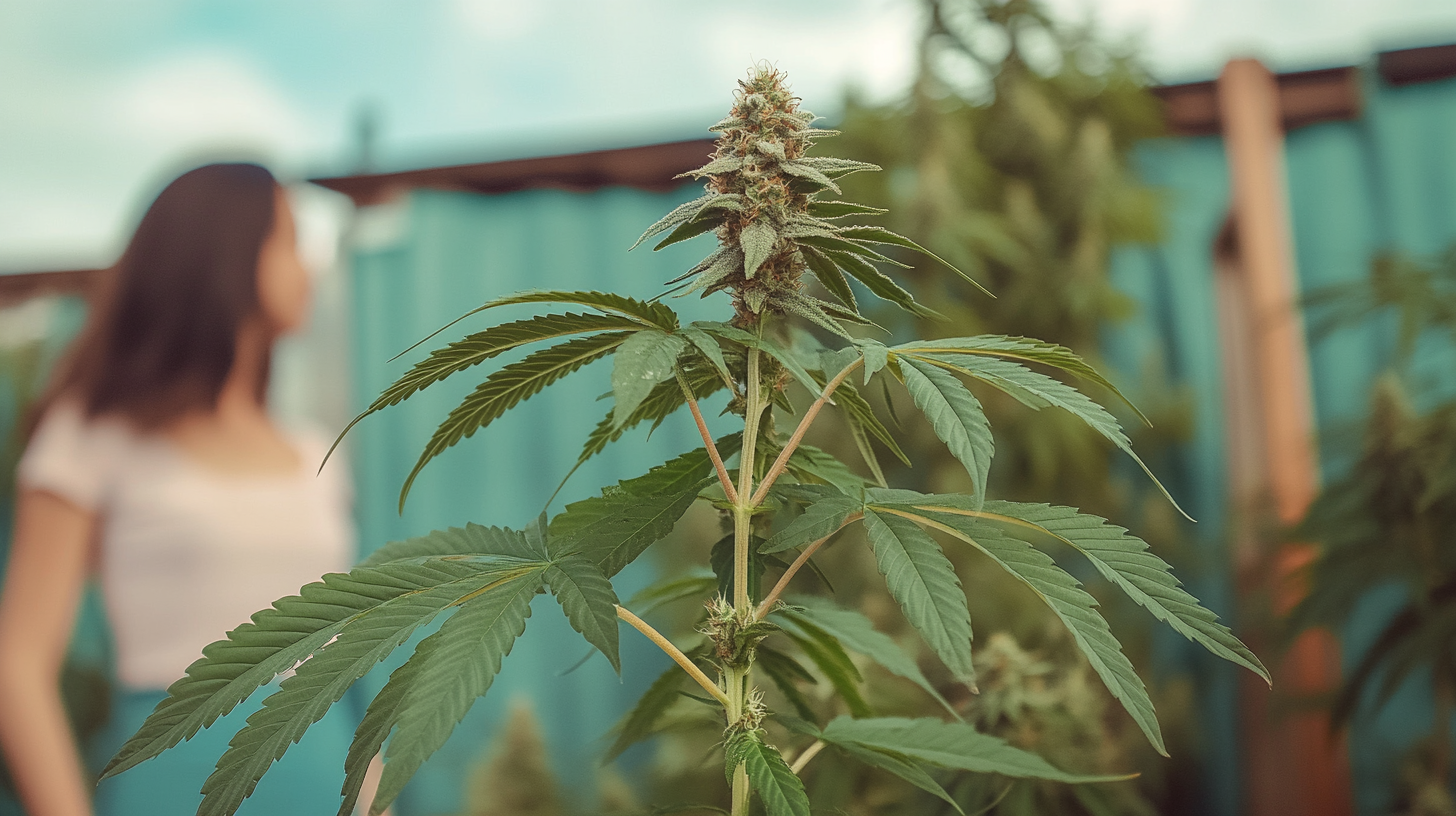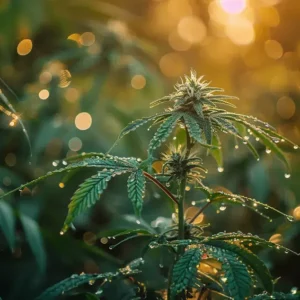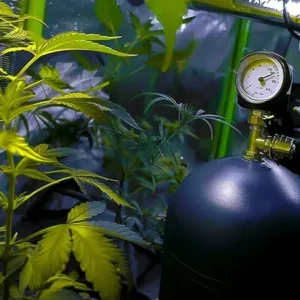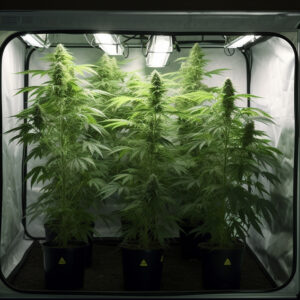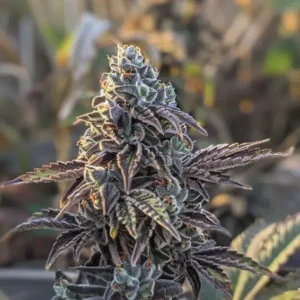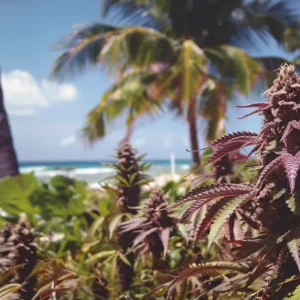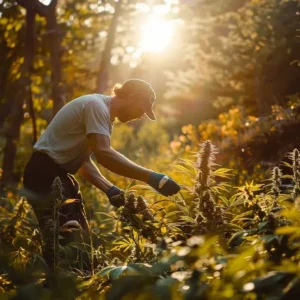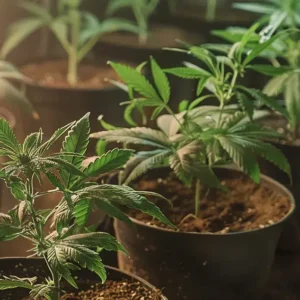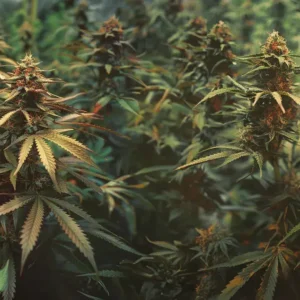When it comes to growing cannabis, choosing between autoflower vs photoperiod strains is one of the main things to ask yourself as a first-time grower because, depending on what you choose, it will affect how you tend to your plants. Not sure where to start? This overview will get you going:


First, let’s check off the basics.
What are photoperiod cannabis plants?
Photoperiodism is the reaction of organisms, like plants, to the length of the night, or dark, period. A photoperiod cannabis plant in nature grows over the course of a Summer to then start blooming when nights get longer. Thus, cannabis plants are naturally photoperiod plants.
Indoor growers use the photoperiod process to artificially deprive the plants of light after just a few months of vegetation. This makes the plant think that nighttime is longer and they should start flowering. Go here to learn more details about the complete cannabis light cycle.
Because most growers want to harvest their plants a.s.a.p. and it can be a hassle to busy yourself with an indoor light schedule, breeders developed a new kind of plant. One that flowers independently of light deprivation. The autoflower.
What are autoflowers?
While photoperiod is how cannabis naturally grows, autoflowers are a product of selective breeding. By crossbreeding cannabis ruderalis with traditional cannabis strains, it gained the trait of flowering with age instead of blooming when nights become longer. The resulting offspring is smaller than its photoperiod counterpart. It also yields less. But the key difference is its shortened vegetative period of about three to four weeks before it automatically starts to flower. This makes their entire grow time around ten to twelve weeks in total.
Go here to learn what autoflower seeds are, or simply head over to my store to get some.
Autoflowers vs Photoperiod: Size
The size of cannabis plants plays an important role in the final yield. It also dictates the kind of setup you choose when growing. If you have the space for a larger plant, you will likely produce a higher yield; however, not everyone has 8 feet of height to spare for cannabis plants. Autoflowering plants are smaller and their shorter branches makes them compact overall. They are great to fit in a small room, windowsill, or grow box.
- Autoflowers grow to around 2-3 feet (60-100cm) tall.
- Photoperiods can grow up to 8 feet (100-250cm) tall.
Autoflowers vs Photoperiod: Maintenance
When considering growing autoflowers or photoperiod plants, maintenance is something to take into account.
Autoflowers are generally easier to grow.
- Autoflowers don’t require light scheduling to start flowering.
- Autoflowers take up less space and don’t require any pruning.
- Autoflowers require less fertilizer to grow into healthy plants.
Photoperiod plants require more maintenance. They need a specific light cycle to flower. And they require more nutrients and additives to grow large. That being said,autoflowers do not handle environmental stress as well as photoperiod plants. Because photoperiod plants have more time to mature and become strong, they have more time to recover from issues as well. Autoflowers that get into trouble because of nutrient, pest, or environmental stresses will go into flowering regardless. This can mean that your autos don’t fully recover and their yield will be lower. Although they are very easy to grow, there’s also very little room for error with autoflowers.
I developed a line of marijuana fertilizers and cannabis plant protectors called Bergman’s Plant Food. These are tailor-made to provide perfect ratios of nutrients and protect against mold, buds, and disease.
First time grower? Have no fear! My Weed Grow Bible will guide you every step of the way. Download it for free!
Autoflowers vs Photoperiod: Grow time
Generally, growers want to harvest their plants a.s.a.p. A quick turnaround means you have access to your crop sooner, and the back-to-back grower can kick off the next grow.
- Autoflowers flowering stage and life cycle take about two to three months from seed to harvest.
- Photoperiods take a full season from late Spring to Fall when grown outdoors.
- Indoors, photoperiod plants can take anywhere from three to five months, depending on your light schedule.
If you don’t want to delve into my free 70-page Grow Bible PDF you can download this handy cheat sheet for plant care instead.


Vegetative phase
The difference between the autoflower and photoperiod plant’s vegetative phase is a toss-up. On the one hand, photoperiod cannabis has a longer vegetation period which leads to a larger plant. This in turn means a larger yield.
- Autoflowers just veg for three to four weeks before they automatically start to flower.
- Outdoors, the vegetative stage of photoperiod plants is basically the entire Summer period.
- Indoors, through light deprivation, you get to control how long you keep photoperiod plants in a vegetative state—usually one to three months.
Head here if you want to learn more about growing and the vegetative stage of cannabis plants.
Flowering phase
The biggest benefit of autoflowers is that they automatically start to bloom after three to four weeks. Unlike outdoor photoperiods where you have to wait until Fall, you will be able to harvest your outdoor autoflowers within ten to twelve weeks instead. That means you can grow two runs of autoflowers over the course of a single outdoor season!
Indoor photoperiod plants can be harvested sooner than when grown outdoors. If you trick the plants into thinking that nights are becoming longer by giving them fewer hours of daily light, they will go into bloom. Still, flowering time takes longer for the average photoperiod. Plus, this process can be disturbed as well. If you forget to put your plants in the dark at the correct times, they will become confused and may revert to their vegetative state. This may lead to all sorts of trouble, having many opt for the easy-going autoflower equivalent.
Re-vegging, as it’s called, can be used as a strategy to grow even more weed from the same plant. But this technique is usually better left to experienced growers.
Head here if you want to learn more about the flowering stage of cannabis plants.
Autoflowers vs Photoperiod: Yield
Since autoflowering plants do not veg as long as photoperiod strains, they do not have the time to grow as big as photoperiods. Not only that, but the auto flowertime is also shorter than photoperiod plants. This all impacts the yield.
- Autoflowers can yield up to 100 grams (3.5 oz) per plant, with averages between 30-70 grams (1-2.5 oz).
- Outdoor photoperiod plants can yield up to 400 grams (13 oz) per plant, with averages between 150-250 grams (5-8 oz).
- Indoor photoperiod plants can yield up to 750 grams (26 oz) with averages between 300-500 grams (10-17 oz).
So if you’re in the market for the biggest yield per plant, go photoperiod. But don’t disqualify autoflowers just yet. With their shorter grow time, you can grow more plants back-to-back. Effectively evening out the yields at the bottom line.
Head over here if you want to learn more about calculating how much a plant can yield or how much autoflowers can yield.


Autoflowers vs Photoperiod: THC levels
THC is the main psychoactive compound found in cannabis, and it’s responsible for most of the desired effects. The levels of THC in the plant, noted in percentages, determine how strong the effect is.
There used to be differences in THC levels between autoflowering and photoperiod cannabis plants. Nowadays there is absolutely no noticeable difference in THC levels between the two.
Autoflowers vs Photoperiod: Pruning and Training
Photoperiod plants can be trained and pruned to get more light to their flowers, fattening up those delicious buds even more. Pruning and training are a great way to increase the yield of your plants. Head here if you want to learn more about these techniques:
Pruning and training do not just increase yields. It also gives your plants some stress in the process. Due to their short lifespans, autoflowers have a hard time recovering from this stress, so pruning and training autoflowers could backfire and cost your yield instead of gaining some. Plus, those short little branches don’t have a lot of places to go either.
Autoflowers vs Photoperiod: Cloning
Photoperiods have a definite advantage when it comes to cloning. Because of their nature, autoflowers are not suitable for cloning. A cloned autoflower will take off where the mother plant left off, which means it might start flowering shortly after rooting. Not a desirable situation for most.
Head over here if you want to learn more about how to clone cannabis plants, but do consider that plants grown from seeds are usually stronger and healthier.
Prefer seeds? Check out the selection of delicious strains at our cannabis seed bank. We ship all over the U.S., and I guarantee that those beans will sprout. Otherwise, my team will help you out!
Is it better to grow Autoflowers or Photoperiod strains outdoors?
What about autoflower vs photoperiod for outdoor growing? Growing either outdoors has its merits and drawbacks.
| Autoflowers | Photoperiod plants |
| ? Start as late as July | ? Must start in Spring |
| ? Harvest within 10-12 weeks | ? Grows a full season |
| ? Small and discreet plants | ? Tall and hard to hide |
| ? Less room for error | ? Better recovery from stress |
| ? Smaller yields | ? Larger yields |
| ? Grow twice in one season |
In the case of photoperiod strains, you will need to time your planting so that your cannabis grows with the sun. Plant your photoperiod seeds in late spring so that they can veg for all of the summer. This way, you can get a better yield from your plants once you harvest, as they’ll have had a longer vegetation phase for absorbing nutrients from the sun and the growing medium they’re planted in.
Autoflowers on the other hand can be planted as late as July. If you start early in the season, you can even grow two rounds of autoflowers!
Another thing to consider when growing outdoors is the potential of nosey neighbors. Photoperiod plants tend to grow big when they get a lot of sunlight. It’s hard to hide an eight-foot monster plant on your balcony. Autoflowers on the other hand can be hidden in plain sight. Be careful though, both plants will become smelly once they’re well into flowering.
Head over here if you want to learn more about growing cannabis outdoors or check out my collection of outdoor cannabis seeds. You can even filter to find the seeds that fit your climate.
Choosing what to grow next?
- Cannabis seed types explained
- What are feminized seeds?
- What are regular cannabis seeds?
- What are photoperiod cannabis seeds?
- What is fast-flowering cannabis?
- What is sinsemilla?
I hope this cleared up your questions regarding the differences between photoperiod and autoflowering cannabis plants. If not, let me know in the comments!
If you want to learn more about growing, don’t forget to download my free 70-page Grow Bible today.
Happy growing!
